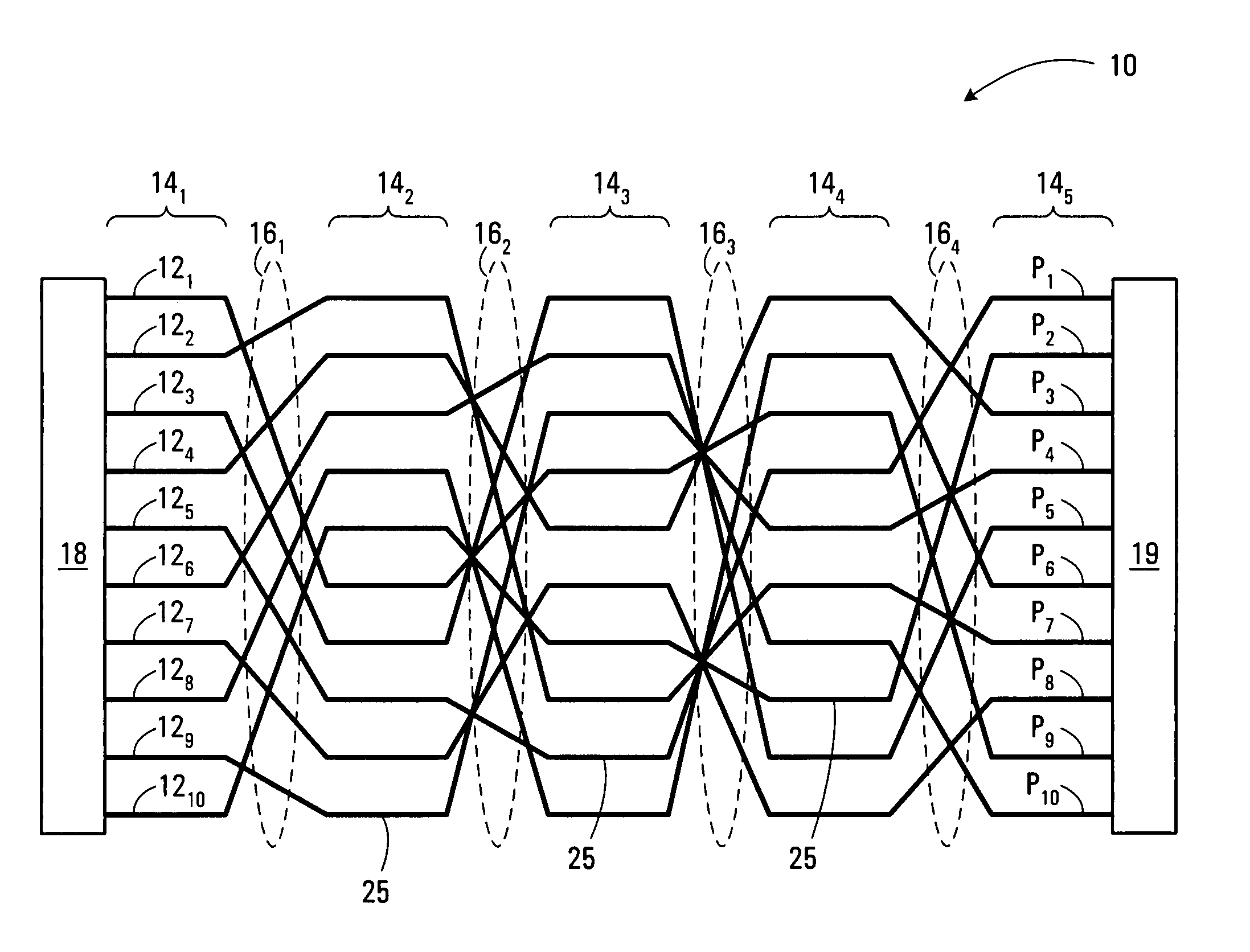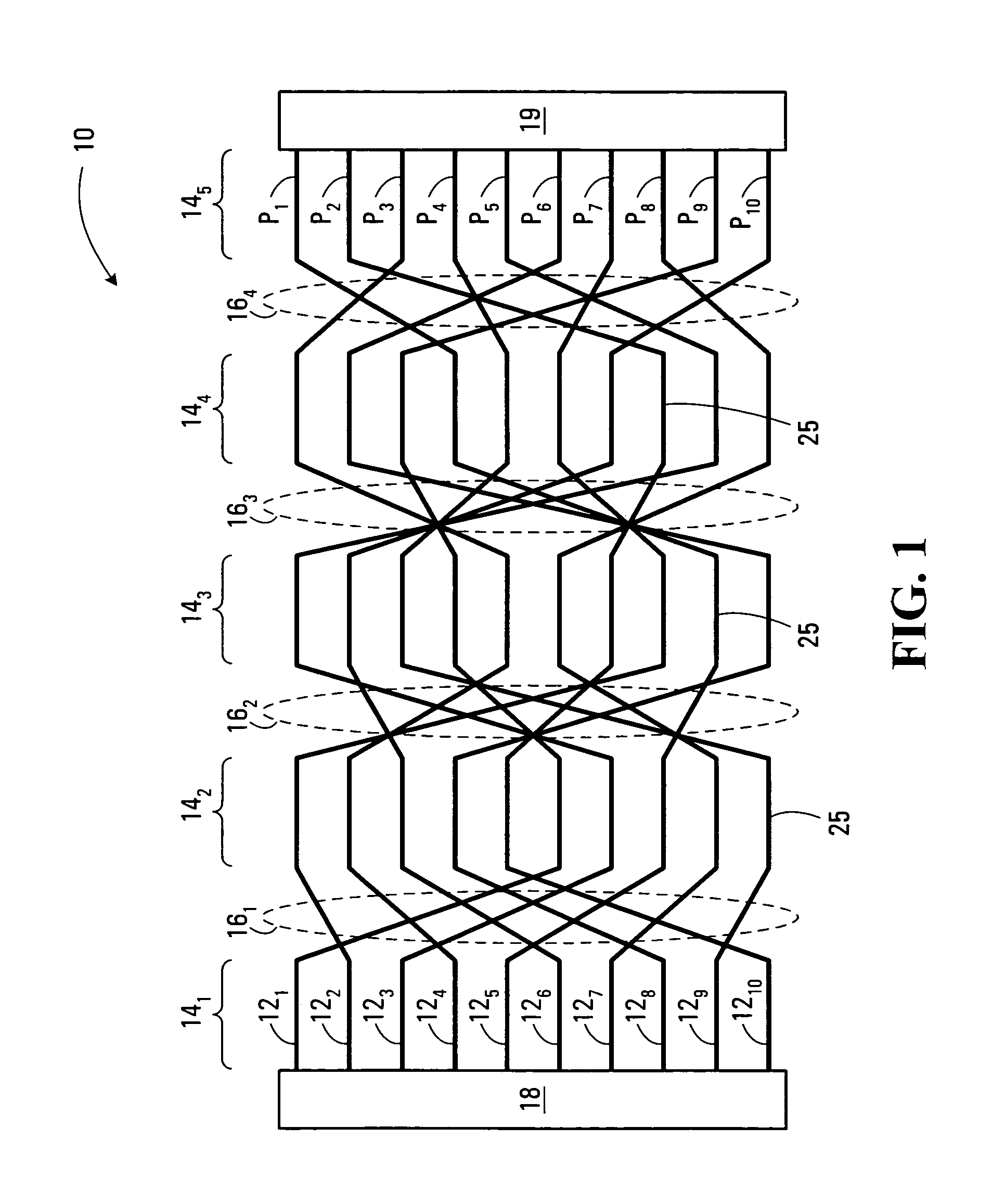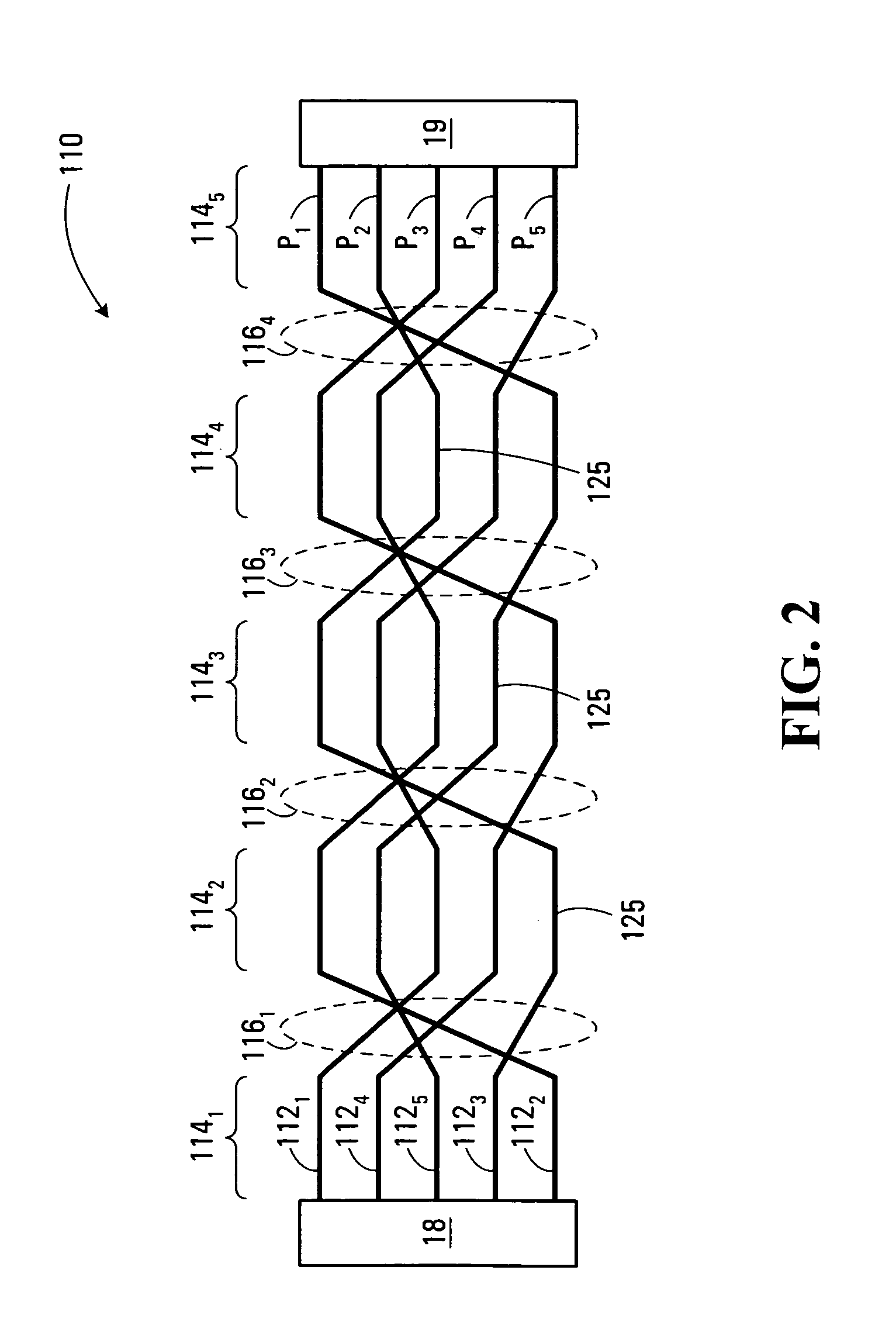Conductive fabric with balanced mutual interference amongst conductors
- Summary
- Abstract
- Description
- Claims
- Application Information
AI Technical Summary
Problems solved by technology
Method used
Image
Examples
Embodiment Construction
[0022]With reference to FIG. 1, there is shown a conductive fabric 10 in accordance with an embodiment of the present invention. The conductive fabric 10 includes a plurality of conductive elements 121–12N which are arranged in an alternating sequence of segments. 141–14K and cross-over regions 161–16Q. FIG. 1 illustrates a conductive fabric including N=10 conductive elements, K=5 segments and Q=4 cross-over regions. The conductive elements 121–12N may be made of any suitable material, such as copper or aluminum. The conductive elements 121–12N may consist of a combination of signal-carrying conductive elements as well as conductive elements that are kept at a reference potential. The signal-carrying conductive elements 121–12N may carry analog or digital signals in either or both directions of communication across the conductive fabric 10. While not essential, in a specific example of implementation, a first processing element 18 is connected to a first end of the conductive fabric...
PUM
 Login to view more
Login to view more Abstract
Description
Claims
Application Information
 Login to view more
Login to view more - R&D Engineer
- R&D Manager
- IP Professional
- Industry Leading Data Capabilities
- Powerful AI technology
- Patent DNA Extraction
Browse by: Latest US Patents, China's latest patents, Technical Efficacy Thesaurus, Application Domain, Technology Topic.
© 2024 PatSnap. All rights reserved.Legal|Privacy policy|Modern Slavery Act Transparency Statement|Sitemap



